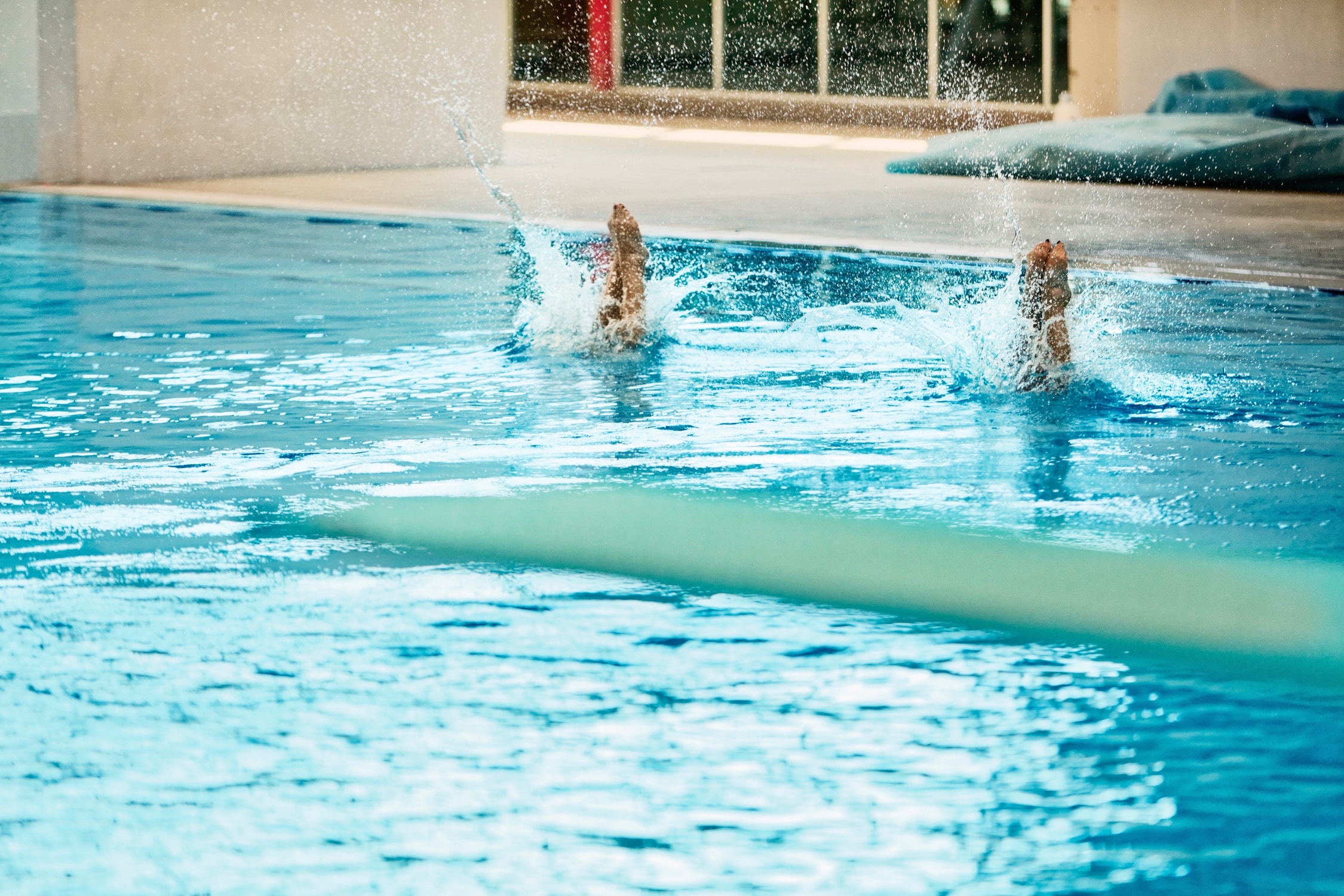While Espinosa was stepping up to the pedestal, Orozco was just stepping onto a board. Born in Guadalajara in 1997, she discovered diving at age 10 while visiting a local athletic center, where she was captivated by the idea of springing off a platform into the pool. A local instructor soon noticed the young talent. “My coach would say, ‘I want you to go up and do this dive,’” Orozco remembers. “And I would. I think that’s what they saw in me: the desire to do the things the other girls wouldn’t do.”
This daring translated into competition wins, which in turn led Orozco to believe that perhaps what her coach said was true — maybe she could achieve something in the sport. Her opportunity to test that prospect arrived just a couple of years later when her idol, Espinosa, asked her to be her 10-meter partner. “It was a dream come true,” Orozco remembers. “I thought Paola was on another level, but she trusted me and that gave me confidence.”

Which returns us to London. Espinosa and Orozco simultaneously twist, tuck and flip, cleanly slicing the pool’s surface at the same instant. Earning 8 and 8.5 scores for a total of 343.24, their performance secured the silver medal, making Espinosa one of two Mexican women ever to win two Olympic medals and designating the then-15-year-old Orozco as Mexico’s youngest Olympic medal winner ever. In a post-competition interview, Orozco, showcasing an easy grin, dimples and saucer-like eyes, thanks her country for its support and expresses her extreme joy. Looking back on that moment nearly four years later, however, Orozco is less effusive. “It has been very difficult,” she says. “I achieved my dream, to win a medal with my idol, at such a young age that I didn’t even realize it until later. It was one of the greatest things, because I had admired Paola all my life. But then I said, ‘What’s next?’”

For her part, Espinosa took the moment to return home, where she too encountered an unexpected trial. “After London,” she says, “I wanted to come back home — to be a normal girl, a family girl.” But when her father, her biggest fan, passed away, it caused her to question her future. The support of her mother and sister helped Espinosa rediscover her diving focus and awoke a desire to compete in Rio. “There’s a difference between what you want and what you desire,” she clarifies. “And, for me, desire has a stronger pull.”
Upon returning to Mexico City, Espinosa contacted Pedro Ignacio Gato Cruz to drive her toward her new goal. Cruz, a renowned trainer and sports physics professor, came to Mexico from Cuba in 2006. His work with the Taekwondo Federation of Mexico and its athletes ahead of the 2012 Games brought him to Espinosa’s attention, for whom he tailored a new training regime focused on anaerobic exercises that increase strength and muscle explosiveness. “To dive you have to be strong, very strong,” Espinosa explains. “That can look a lot of ways. Divers all have different bodies and different strengths. There isn’t an archetype of what a diver’s body should be.”
“It’s dangerous. I love that fear and adrenaline.”

As Espinosa looked toward the future, Orozco grappled not only with articulating a new dream but also with the physical changes that occur as an adolescent becomes an adult. Crucially, her center of gravity had shifted, challenging the pair’s previously achieved synchronicity, the cornerstone of their success. Evidence of both struggles was on display in 2014, when the team placed sixth in a key international competition. Reflecting on her journey, Orozco says, “It is a weight carrying a medal on your back. There are a lot of people who have a lot of expectations of me. They think, ‘Oh, she won a medal. She has to win more and more.’”
